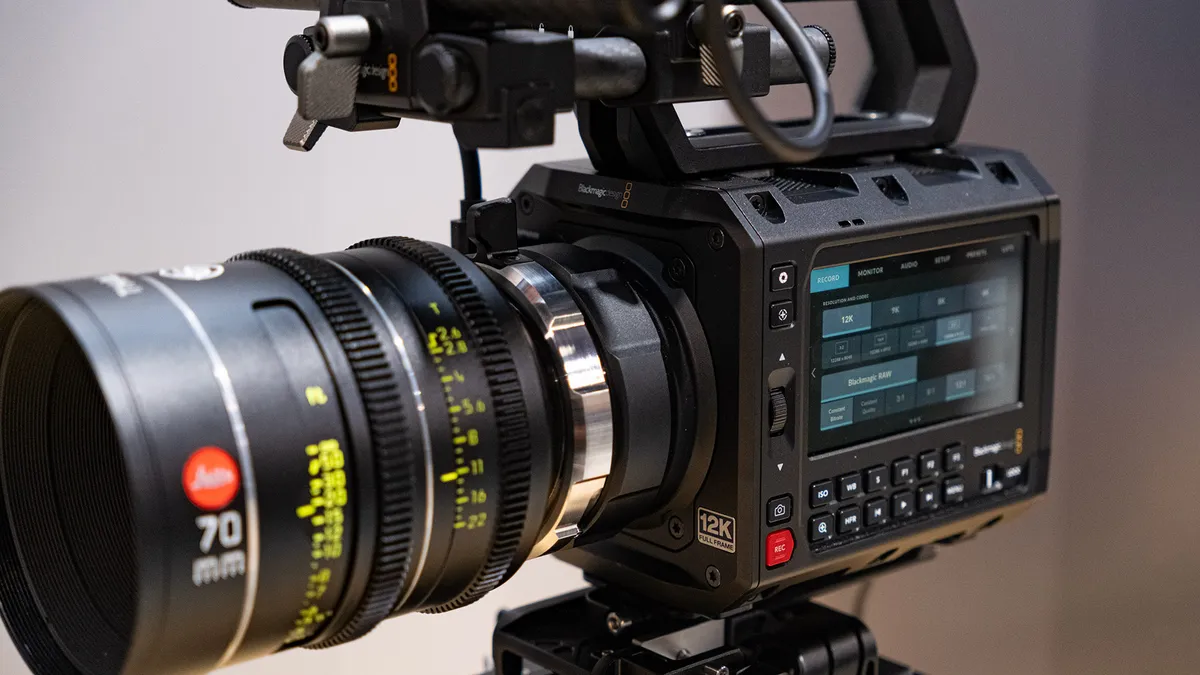
Since Blackmagic Design officially announced the new PYXIS 12K camera on Friday, it has garnered significant attention from both industry professionals and enthusiasts. During the first day of the NAB Show, we had the opportunity to speak with Craig Heffernan from Blackmagic Design, addressing several crucial questions about the camera that were inspired by your comments. Our discussion covered key topics such as RGBW sensor capabilities, uncropped 4K recording, readout speeds, power consumption, media options, and much more. Let’s delve into the details of the Blackmagic PYXIS 12K.
As Craig highlighted, the Blackmagic PYXIS 12K features a design that is nearly identical to its predecessor, the PYXIS 6K, which was introduced last year. This means it retains the same ergonomic design, body configuration, and connectivity options. The camera includes a side touchscreen display and offers three lens mount options: L, EF, and PL. The major upgrade this time around is the inclusion of the 12K full-frame RGBW sensor derived from the Blackmagic URSA Cine 12K.
One of the standout features of the new PYXIS 12K is its innovative RGBW sensor technology. This technology enables uncropped internal Blackmagic RAW video recording at resolutions ranging from full 12K down to 4K, utilizing the entire width and height of the sensor. Unlike traditional Bayer sensors, which typically require cropping for lower-resolution recordings, the RGBW sensor employs advanced processing techniques to achieve full sensor readout without relying on line skipping. According to Blackmagic Design, this results in 4K images that are significantly more detailed than those produced through standard line skipping methods. Additionally, as resolution decreases, the camera offers increased frame rates, allowing for flexibility in production needs.
The readout speed of the 12K sensor in the PYXIS body is slightly lower than that of the URSA Cine 12K camera due to the latter’s superior image processing capabilities and cooling system. Craig mentioned that the readout speeds for the PYXIS 12K are roughly double in each recording mode compared to the URSA Cine 12K. Blackmagic Design has even provided a comparison table on their BMD forum highlighting the readout speeds across various models. The PYXIS 12K achieves readout speeds of 24.12-15.34ms in 12K and 13.51-8.59ms in 8K and 4K, depending on the selected aspect ratio. We look forward to conducting our own rigorous tests in the CineD lab once the camera becomes available.
During our conversation, we inquired about the absence of internal ND filters, a feature that some users found disappointing. Craig explained that the camera body closely resembles that of the PYXIS 6K, making it infeasible to integrate an internal ND filter system without significant redesign and cost increases. However, he expressed hope that future iterations of Blackmagic cameras would include this feature. On a positive note, the PYXIS 12K is equipped with an Optical Low-Pass Filter (OLPF) to mitigate moiré effects, and the IR cut filter has been optimized for the 12K sensor.
As announced on Friday, the Blackmagic Cinema Camera 6K has recently acquired an advanced autofocus system with a public beta firmware update. Blackmagic Design aims to extend this capability across more models in their lineup. Craig noted that while feedback on the continuous phase-detection autofocus in the BMCC 6K is being gathered, integrating such a system into the PYXIS 12K will require extensive engineering work due to its unique sensor technology. Therefore, it may take some time before autofocus capabilities are realized in this model.
Regarding power consumption, the PYXIS 12K maintains a consistent power draw regardless of the resolution being recorded, always operating in 12K scan mode. Craig indicated that the camera consumes between 60-80W depending on the configuration and connected accessories. Both the monitor and electronic viewfinder (EVF) draw a similar amount of power via the USB-C port. The PYXIS 12K is equipped with two CFexpress slots and an additional USB-C port for saving recorded footage to external SSDs. It's important to note that the bitrate for the least-compressed 12K recording mode is quite high, and using slower media may result in dropped frames. Fortunately, the camera includes a feature to halt recording if it detects any frame drops.
Like the previous 6K model, the PYXIS 12K is limited to a single-channel audio input, primarily intended for scratch audio to sync with high-quality externally recorded audio when not using timecode. Additionally, the PYXIS cameras are equipped with a BNC timecode input port. Notably, the PYXIS 12K includes a built-in gyroscope that captures stabilization data, which is stored as metadata within the recorded footage, enhancing post-production flexibility.
The Blackmagic PYXIS 12K is set to ship in July 2025 and is currently available for pre-order. It’s essential to highlight that the US price has increased by 32% following newly imposed tariffs, raising the initial announcement price from $4,995 to $6,595. In contrast, prices in other regions, such as Europe, remain unchanged, with pre-orders available for approximately €4,855 plus VAT.